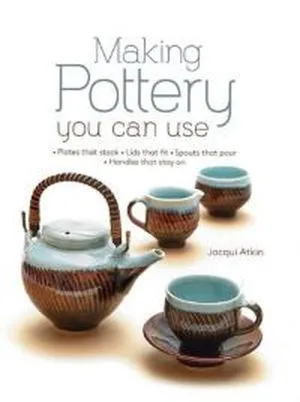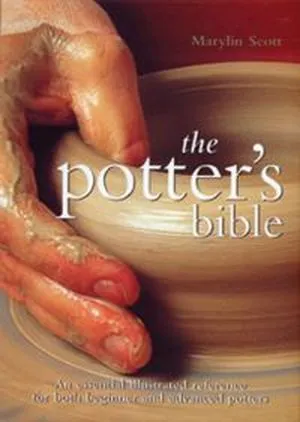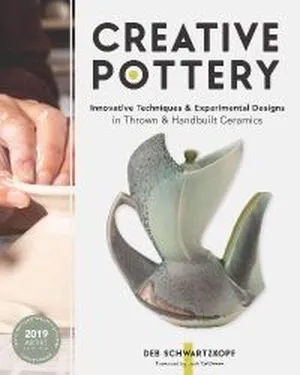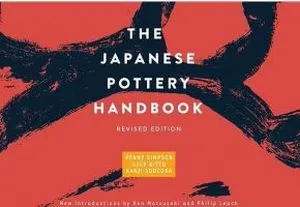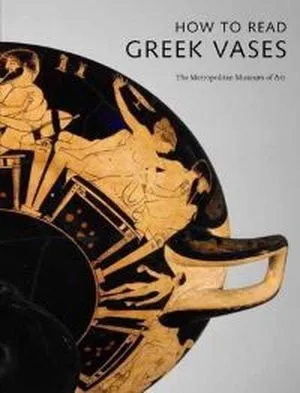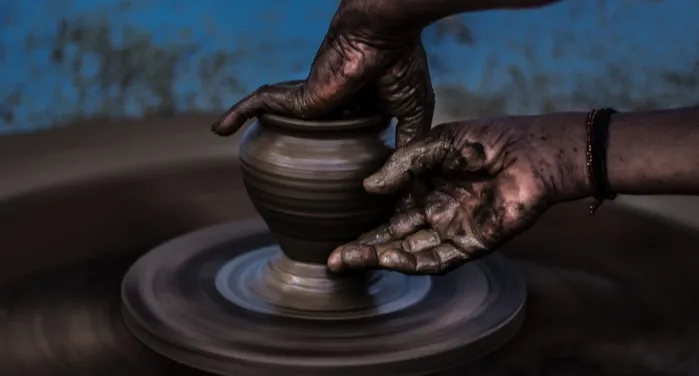
The Best Pottery Books for Beginners
If one of your goals for the New Year is to get more creative, pottery is an overlooked option. There are so many things that might distance a person from pottery: pottery is a fine art; it requires a kiln because home ovens can’t get hot enough to fire clay; mugs, cake stands, and flower pots are readily available from the local Big Box Store. Making pottery can give you a new understanding, appreciation, and way of looking at those everyday commodities. With the right tools and pottery books for beginners, you can be on your way to a fun and functional new hobby.
“Like a vase, a heart breaks once. After that, it just yields to its flaws” —Sarah Manguso, Short Days
It was the toilet episode of The Great Pottery Throw Down that did it for me. In it, potters were challenged to construct fully flushable toilets. Marrying plumbing with creative design was the fact that these were to be Victorian toilets, which were often decorative. The challenge sent me into a tailspin of pottery history. After relearning about prehistoric pottery that baked in the sun, I became convinced that pottery is for the people.
For now, pottery studios might be closed and their alternative, home kilns, are an investment. But if you’re interested in the world of pottery, starting with a book is an ideal way in. These are some of the best pottery books around that will help you get a better glimpse of what’s involved. Soon, you’ll be fettling and digging clay out from under your nails.
Note: Pottery artifacts have been found on every continent since 6000 BC at the absolute latest. Despite that fact, it’s challenging to find introductory pottery books from a range of cultures and/or by diverse writers. As a result, this list features primarily white authors. Jim McDowell, an artist who calls himself “The Black Potter,” continues to call attention to the fact that the American pottery world remains predominantly white. See McDowell’s work and read his artist statement and bio here.
Making Pottery You Can Use by Jacqui Atkin
New hobbies like pottery should be about process over product. But sometimes you want to make a specific item, and you want to make it functional. The logline of Atkin’s book puts it perfectly: “Plates that stack. Lids that fit. Spouts that pour. Handles that stay on.” Here, she focuses on teaching the techniques you’ll need for turning the item in your mind into a tangible thing. It’s a solid reference text geared towards beginners who have yet to learn the difference between thrown, coiled, slabbed, and molded plates. There are clearly labeled photos on practically every page so you really understand what you’re looking at. Informative and fun to flip through for inspiration, this easily makes the list of the best introduction to pottery books.
Potter’s Bible by Marylin Scott
Starting with explaining tools, equipment, and types of clay, Scott walks you through pottery from the ground up. The Potters Bible is very visual, making the following along a cinch. Its spiral binding holds your page as you work, which is an ingenious design. One of the hardest parts of learning a new skill is the way simple topics quickly branch out in unruly rabbit-holes of specifics. Making those connections is made easier here, since, at the bottom of the section, Scott suggests related subjects with their page number. For pottery 101, this book has a comprehensive sweep. Though it’s up to readers to dig deeper into topics that are introduced here, this pottery book will successfully set you up for that excavation.
Creative Pottery by Deb Schwartzkopf
Maybe you’re returning to pottery after a while and are reassembling the pieces of what you once knew. Or maybe you’ve mastered the basics already and are ready to start thinking and creating on a new level. Creative Pottery covers the fundamentals quickly before moving on to a more intermediate level. By offering new shapes, templates, and projects, Schwarzkopf will have you harnessing your creativity.
Each chapter spotlights a featured artist. It’s an especially nice touch that gives into your most curious impulses of what goes into the craft of being a professional potter. Schwarzkopf is generous with her knowledge and insights, making this easily rank as one of the best pottery books available.
The Japanese Pottery Handbook by Penny Simpson, Kanji Sodeoka, and Lucy Kitto
First published in 1979, The Japanese Pottery Handbook was the rare craft book that kept history and culture omnipresent while teaching technique. At the time, writer Penny Simpson was a British potter living in Japan. Kanji Sodeoka was Simpson’s pottery teacher turned colleague and co-writer. It was meant to be an introduction to Japanese pottery book, and as such, it succeeded and stuck around. In 2014, a revised edition was released. The bilingual format was retained, with both English and Japanese pottery terms listed. Part of what makes pottery endlessly fascinating is that every region has its own methodologies and styles. When will every culture get its own equivalent to this pottery book?
How to Read Greek Vases by Joan R. Mertens
It can be jarring for a person devoted to books to realize that they are less literate in other arts. That wasn’t a jab at you, dear reader. I am definitely speaking for myself. When I see an ancient vase and my mind says: “Who the hell decided to make these ornate flower holders?” I can’t even begin to read the imagery, because I deflect in the form of bad jokes. If you’re anything like that, it is my great pleasure to introduce you to the How to Read series about departments of The Met collection. In these books, the word “read” is a metaphor for visual comprehension. Book lovers with an interest in pottery and history will especially take interest in this trove since ancient Greek storytelling continues to be influential in contemporary literature. Titling this book with a focus on vases is a bit of a misnomer. An entire world of ceramics is showcased here with resplendent images. It’s why this made the cut of best pottery books. My personal favorite is the drinking cup shaped like a cow’s hoof, with a picture of a cowherd delicately painted on it.
Looking for more craft ideas? Check out the archives for bookish crafts, craft books, and craft kits.



